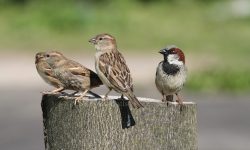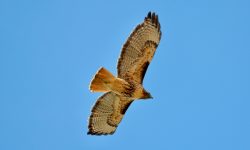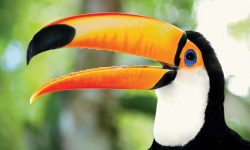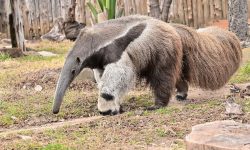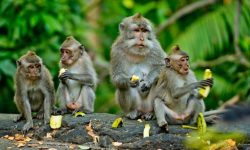Introduction: Nature’s Smallest Flyers with the Mightiest Hearts
Despite being among the tiniest birds on Earth, hummingbirds lead extraordinary lives packed with speed, precision, and complexity. From their delicate eggs to their shimmering adult forms darting through the sky, the life cycle of a hummingbird is one of nature’s most impressive marvels. Understanding each stage of their development not only deepens our appreciation for these tiny acrobats but also highlights the fragile beauty of life in motion.
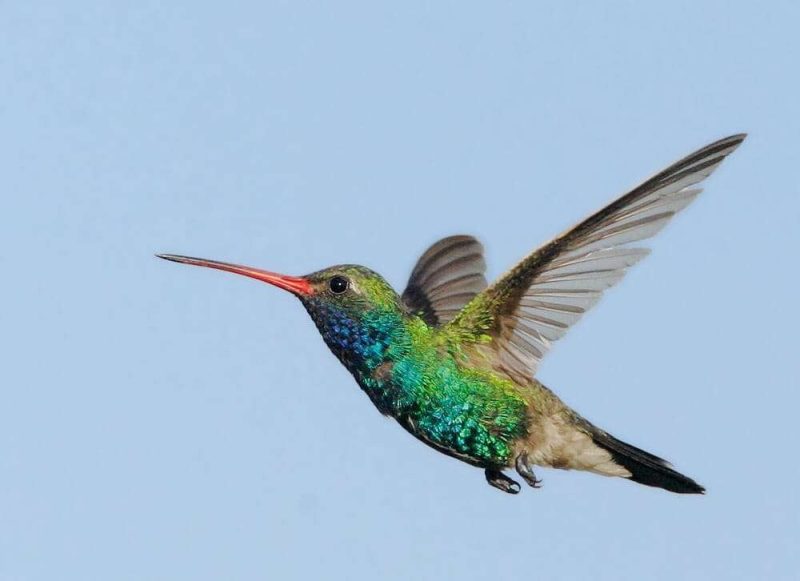
Stage One – The Nesting and Egg-Laying Process
Selecting the Perfect Nest Site
The first step in a hummingbird’s reproductive journey begins with an act of remarkable instinct and precision: choosing the right place to build a nest. This decision is made solely by the female, who acts as the architect, builder, and caretaker of the future brood.
She surveys her surroundings with keen awareness, often selecting a slender, downward-sloping branch nestled deep within shrubs, leafy vines, or tree canopies. The ideal location is carefully calculated—high enough to deter ground predators, yet sheltered enough to withstand wind, rain, and blazing sun. Unlike many birds that reuse or share nests, hummingbirds build a fresh nest for every clutch, making this selection process even more critical.
Environmental flexibility is key. The chosen site must support a nest that will expand as the chicks grow, but still remain secure against sudden movements. If the branch sways too much, or the area is too exposed, the female abandons it and starts anew. Research shows that some species even prefer areas near reliable food sources—like blooming plants or insect-rich foliage—so they don’t have to stray far while raising their young.
In essence, the nest site isn’t just a physical foundation—it’s the first line of defense, the nursery, and the stage where one of nature’s most delicate life cycles begins.
Crafting a Miniature Masterpiece
Once the perfect site is selected, the female hummingbird begins constructing a nest that rivals any engineered structure in both efficiency and elegance. Despite its modest size—often no larger than a ping-pong ball—the hummingbird’s nest is a marvel of biological architecture, meticulously designed to protect and support life.
The construction process can take 5 to 10 days, during which the female gathers a carefully chosen blend of moss, lichen, and fine plant fibers. These natural materials are not selected at random; moss provides insulation and moisture regulation, while lichen offers camouflage, blending the nest into its surroundings almost invisibly. But the true structural magic lies in an unlikely ingredient: spider silk.
By weaving strands of spider silk into the nest’s foundation and walls, the hummingbird creates a flexible and expandable cradle. The silk binds materials tightly, yet stretches to accommodate the rapidly growing chicks, ensuring the nest maintains its shape without tearing. This elasticity also allows the nest to stay snug around the eggs early on, then expand seamlessly as movement and pressure increase.
With each fiber delicately pressed and shaped by her body and beak, the female forms a cupped bowl with perfectly curved sides, often anchoring it to the branch with silk to prevent slippage. The interior is then softly lined with feathers, plant down, or animal hair—materials that cushion the eggs and regulate temperature.
In the world of birds, few nests achieve such a balance of strength, camouflage, comfort, and adaptability. It is, in every sense, a miniature masterpiece crafted entirely by a creature that weighs less than a coin.
Laying the Eggs
With her nest complete—firmly anchored, softly lined, and perfectly formed—the female hummingbird proceeds to the most delicate phase of the reproductive cycle: egg-laying. Typically, she deposits one or two eggs, each an ivory-white oval no larger than a pea, weighing barely a gram. These are not only among the smallest bird eggs in the world, but also among the most vulnerable.
The eggs are laid one at a time, usually spaced a day apart, and carefully positioned within the deepest part of the nest to maximize warmth and protection. Despite their tiny size, each egg carries within it the full genetic blueprint of a creature capable of hovering mid-air, flying backward, and crossing continents during migration.
Incubation begins immediately after the second egg is laid. The female alone assumes the task, perching low over the nest to shield her clutch with her body heat. Her brooding posture is tight and motionless, often interrupted only briefly as she darts off to feed and then returns swiftly to resume incubation. Maintaining consistent warmth is essential for embryonic development, especially because hummingbird eggs lack the insulating mass seen in larger bird species.
The incubation period typically lasts between 14 and 23 days, varying by species and environmental factors such as altitude and temperature. Throughout this time, the mother remains hyper-vigilant—balancing her own nutritional needs with the survival of the next generation, cradled in silence beneath her feathers.
What begins as two specks of life soon transforms into the heartbeats of future flyers, signaling the next stage in one of nature’s most breathtaking life cycles.
Stage Two – Hatching: The Beginning of Life
Helpless at Birth
After weeks of incubation under the unwavering warmth of their mother, the hummingbird chicks finally emerge—but their arrival into the world is marked not by strength, but by extreme fragility. At hatching, each chick weighs less than a paperclip and embodies the classic characteristics of altricial birds: blind, featherless, motionless, and utterly dependent on maternal care for survival.
Their skin is translucent and pinkish, revealing tiny, underdeveloped organs beneath. The head appears disproportionately large, the neck wobbly, and the wings mere stubs pressed tightly against the body. Eyes remain sealed shut for up to a week, and they possess no functional thermoregulation, meaning they are entirely reliant on the mother to maintain a stable body temperature.
At this early stage, the chicks lack the strength even to lift their heads. Yet remarkably, they respond to the presence of their mother through subtle vibrations and shadows cast over the nest. These sensory cues trigger an automatic reflex: gaping—the act of opening their beaks wide in anticipation of food.
This vulnerable state is one of nature’s most precarious balances. Without consistent warmth, food, and protection, the chicks would not survive more than a few hours. But under their mother’s careful watch, a transformation is already underway. Cell by cell, the once-invisible machinery of growth begins to work—preparing these helpless beings for a life that will soon defy gravity.
Feeding the Chicks
In the days following hatching, the survival of the hummingbird chicks depends entirely on the mother’s tireless devotion and finely tuned feeding behavior. With their eyes still closed and bodies incapable of movement, the chicks rely on a single act repeated dozens of times a day: being fed by their mother.
Several times each hour, the female returns to the nest carrying a carefully blended mixture of regurgitated nectar and soft-bodied insects—a formula rich in both simple sugars for energy and proteins critical for growth. Unlike adult hummingbirds that sip nectar directly from flowers, the chicks receive their meals through a much more intimate method.
The mother hovers briefly, then perches on the rim of the nest. With precise coordination, she inserts her slender bill deep into the open mouths of her chicks, sometimes reaching down into the crop, a temporary food storage chamber within the chick’s esophagus. This ensures maximum nutrient absorption and minimizes the risk of aspiration or choking.
Each feeding lasts only a few seconds, but its impact is profound. The chicks’ rapid metabolism processes the food almost immediately, fueling cell division, organ development, and the early stages of feather formation. Even as the mother must consume her own body weight in food daily to maintain this feeding schedule, she never shares the responsibility—male hummingbirds play no role in chick rearing.
This intense feeding phase lasts about two weeks, during which the chicks grow at an astonishing pace. What begins as a drop of liquid in a gaping beak soon becomes the fuel that powers one of nature’s fastest transformations—from a silent nestling to a hovering marvel.
Rapid Development
From the moment they hatch, hummingbird chicks enter a phase of explosive growth—a biological sprint powered by one of the highest metabolic rates in the animal kingdom. Though born in a state of near helplessness, they transform rapidly, their development compressed into mere days.
Within the first week, the chicks double in size, fueled by the rich, energy-dense diet delivered by their mother dozens of times each day. Their tiny organs enlarge and differentiate, their bones begin to strengthen, and a fine layer of down emerges—offering the first hint of insulation and protection. Despite their growing mass, their skin still appears pink and fragile, stretched over the ballooning structures beneath.
By the second week, the transformation becomes strikingly visible. Pinfeathers—small, dark sheaths that will eventually unfurl into flight feathers—begin to break through the skin, particularly along the wings and spine. Simultaneously, the eyes open, allowing the chicks to take in light and movement for the first time. With sight comes new levels of awareness, and the nestlings begin to respond more actively to their environment.
Their metabolism operates at a relentless pace, converting nutrients into tissue with astonishing efficiency. The heart beats rapidly, the lungs expand to meet rising oxygen demands, and muscle mass increases to prepare for the next critical milestone: flight.
This stage is one of constant change. Each day brings visible progress, and within two short weeks, the once-naked hatchlings begin to resemble miniature versions of their iridescent parents—eager, alert, and on the verge of mastering the skies.
Stage Three – Fledging: Preparing for Independence
Wing Strength and Feather Growth
By approximately day 18 to 30, depending on species and environmental conditions, hummingbird chicks undergo one of the most critical transitions in their development: the preparation for flight. At this point, their transformation from bare, blind hatchlings to sleek, feathered juveniles is nearly complete.
Their bodies are now fully cloaked in feathers, including the long, iridescent primaries that will soon generate the lift required for hovering. As the contour feathers mature and the pinfeathers open, the birds take on the shimmering hues and compact form characteristic of adult hummingbirds. Though they may still appear slightly fluffier than adults, the chicks now resemble miniature versions of their parents.
Inside the nest, space becomes tight. The young birds begin to flutter their wings rapidly, often in short bursts that resemble vibration. These micro-flights are not just instinctual but essential for building pectoral muscle strength—a key requirement for sustained hovering, which no other bird performs with such precision and energy.
At the same time, their nervous systems are calibrating the fine motor coordination needed to execute the complex flight maneuvers hummingbirds are famous for: forward motion, backward flight, hovering, and even vertical takeoff. These movements are practiced in subtle ways, with chicks shifting position, stretching wings, and testing the limits of their tiny bodies.
Though confined to the nest, this stage marks the beginning of flight-readiness. Every muscle contraction, feather alignment, and flick of the wing is a rehearsal for the moment they will finally take to the air—where agility, speed, and precision are not just skills, but survival tools.
First Flight Attempts
The moment of fledging—the chick’s first attempt at flight—is one of the most fragile and breathtaking transitions in the hummingbird’s life cycle. After days of vigorous wing-fluttering and strength-building inside the cramped nest, the young bird finally stands at the edge, facing the unknown.
Unlike songbirds that may simply flutter down to the ground, hummingbirds must immediately execute controlled aerial maneuvers, including hovering in place. This makes fledging a high-risk, high-precision event, requiring not just muscle strength but acute balance, timing, and instinct.
The first flights are typically short—a few clumsy hops or brief lifts that might last only seconds. The juvenile may land awkwardly on nearby leaves or return hastily to the nest, but each attempt improves coordination and confidence. Though flight is instinctual, fine control is learned through repetition, trial, and adjustment.
Even after taking to the air, fledglings remain close to the nest area for several days, returning frequently to rest or seek comfort. During this transition, the mother continues to feed and guard her young, swooping in with meals of nectar and insects. She calls softly, guiding them to perch safely or coaxing them toward flowering plants where they will soon begin to forage on their own.
This stage is not merely a physical milestone—it is a psychological and behavioral shift, where the chick begins to perceive the world as a space to navigate independently. Within just a few days of fledging, most young hummingbirds are flying with surprising agility, testing the airspace around them and preparing for the fully aerial life that lies ahead.
Learning to Feed
With their wings now strong and flight increasingly confident, young hummingbirds face another essential challenge: learning how to feed themselves. Though they have been nourished entirely by their mother up to this point, fledglings must quickly master the complex behavior of locating, accessing, and consuming nectar—their primary energy source—as well as capturing small insects for protein.
Unlike simply pecking at seeds or berries, feeding for a hummingbird involves the unique skill of hovering in place while inserting a long, slender bill into narrow floral tubes. This requires not only flight control, but precise timing, balance, and spatial judgment—abilities that are still developing in juveniles.
At first, their efforts are awkward. They may approach the wrong part of a flower, miss the opening entirely, or hover unsteadily while attempting to insert their bill. Some even try to perch where no support exists or investigate non-nectar objects. But with repeated trial and error, they begin to associate visual cues—color, shape, and even flower orientation—with rewarding nectar sources.
During this learning phase, many fledglings benefit from observational learning, watching their mother or other adult hummingbirds at feeders or flowers. Some follow adults directly to food sources, mimicking their movements and refining their own technique. Gradually, their tongue movements become faster and more synchronized, allowing them to draw nectar efficiently through capillary action with their split, tube-like tongues.
Simultaneously, they begin practicing aerial insect hunting, snapping up gnats, fruit flies, and small spiders mid-flight or gleaning them from leaves. Protein from insects is critical for continued growth, especially as they transition fully to self-sufficiency.
Within just a few days to a week after fledging, most young hummingbirds become adept foragers, now equipped with the instincts, skills, and energy reserves needed to explore the wider world—and eventually, to migrate, defend territory, and repeat the cycle of life.
Stage Four – Maturity and Reproduction
When Do Hummingbirds Reach Adulthood?
The journey from helpless hatchling to independent flyer unfolds at remarkable speed, but true adulthood in hummingbirds involves more than flight—it requires the full development of plumage, reproductive organs, behavior, and instinct. Most hummingbirds reach sexual maturity within their first year, often just a few months after fledging, depending on the species and environmental conditions.
As juveniles transition into adulthood, their plumage undergoes a dramatic transformation. Males, in particular, begin to display the dazzling iridescent throat patches, or gorgets, that are used in both territorial defense and courtship. These feathers reflect light at specific angles, producing brilliant hues of red, orange, violet, or green—colors that were absent or dull in their earlier stage. The development of this coloration signals readiness for competition and mating.
Alongside visual changes, their neuromuscular coordination and energy systems reach full capacity, enabling them to perform the precise, high-speed maneuvers that define hummingbird flight. Adult hummingbirds can beat their wings up to 70 times per second, hover in midair, dive at incredible speeds, and reverse direction with millisecond precision. These flight capabilities are not only essential for feeding but also for avoiding predators and asserting dominance in highly competitive environments.
With maturity also comes the emergence of territorial behavior and the instinct to migrate in species that travel long distances. Hummingbirds must navigate complex environments, remember food sources, and defend valuable territory—all tasks that require the fully developed cognitive and sensory abilities of an adult bird.
By the end of their first year, most hummingbirds are no longer learners, but participants in the full cycle of survival and reproduction—ready to seek mates, build nests, and pass on their genetic legacy in the form of the next generation of airborne jewels.
Territorial Instincts and Courtship Displays
With adulthood comes not only the physical tools for survival, but also the behavioral arsenal that hummingbirds use to assert dominance and attract mates. Among males, the onset of the breeding season triggers a dramatic shift: they become fiercely territorial, transforming peaceful gardens or forest edges into aerial battlegrounds.
Adult males often claim small but resource-rich areas—clusters of nectar-laden flowers, prime feeding spots, or attractive perching zones—and defend them with unwavering intensity. Any intruding bird, regardless of size or species, is swiftly chased off with a rapid, buzzing pursuit. These territories aren’t just feeding stations; they are stages for performance, where males demonstrate their fitness not only through defense, but also through display.
Courtship is as much about visual spectacle as it is about endurance. Males of many species perform elaborate aerial displays to impress females. One of the most iconic behaviors is the “shuttle display”, where the male hovers in front of the female in a rhythmic, side-to-side motion, his iridescent throat feathers flashing in the sunlight. Some species, such as the Anna’s Hummingbird, add a vocal component—emitting sharp chirps or buzzing notes mid-display to heighten the effect.
In other species, males execute dramatic dive displays, climbing high into the air—sometimes over 100 feet—then plunging downward at dizzying speeds, reaching up to 60 miles per hour, before pulling up in front of a perched female. During the dive, the air rushing through specialized tail feathers produces unique sounds—a mechanical whistle or buzz—that adds an acoustic signature to the performance.
These displays serve multiple purposes: they signal health, flight mastery, and genetic fitness, while simultaneously reinforcing territorial boundaries. Only the most agile, vibrant, and persistent males are chosen by females, who remain largely silent observers throughout the process, selecting mates based on the quality and consistency of their performances.
For male hummingbirds, courtship is not a passive hope—it is a competitive, high-energy ritual in which every feather, sound, and flight path can mean the difference between passing on their genes or being overlooked entirely.
Repeating the Cycle
Once courtship ends and mating is complete, the male’s role concludes—he offers no help in nesting or raising young. The female, now fertilized, retreats to begin the next phase of the cycle entirely on her own, carrying the full burden of reproduction and parental care with quiet precision and purpose.
She wastes no time. Within days, she selects a new nesting site—often far from the display area—and begins constructing yet another intricately crafted nest, built from mosses, lichens, plant fibers, and spider silk. Unlike species that reuse old nests or co-parent, hummingbirds typically construct a fresh nest for each clutch, ensuring optimal safety and structural integrity.
Soon after the nest is complete, the female lays her tiny eggs, incubates them in solitude, and prepares for weeks of brooding and feeding. Her movements become predictable and tireless: darting out to forage, returning to warm the eggs, later feeding the hatchlings dozens of times a day. Through all weather and predation risk, she remains vigilant.
This reproductive independence is biologically extraordinary. The female hummingbird not only builds, incubates, and feeds without assistance, but may do so multiple times per season, raising two or more broods if food is plentiful and conditions allow. Each cycle demands intense energy and risk—but it also ensures that her genetic legacy is carried forward through the next generation of shimmering, winged dynamos.
In this way, the life cycle of the hummingbird comes full circle. What began as a solitary act of nest-building becomes a generational rhythm—each clutch, each fledgling, a testament to the resilience and ingenuity encoded in this tiny, airborne marvel.
How Long Do Hummingbirds Live?
At first glance, one might assume that a creature as small, fast, and metabolically intense as a hummingbird would burn out quickly—but nature tells a more surprising story. Despite their rapid heartbeats (up to 1,200 beats per minute), relentless wingbeats, and constant need for food, hummingbirds often live longer than expected for animals of their size.
In the wild, most hummingbirds have an average lifespan of 3 to 5 years, but this figure masks the full potential of their longevity. Individuals that survive the perilous first year—where the risk of predation, starvation, or nest failure is highest—often go on to live significantly longer. Documented cases show some hummingbirds reaching 7 to 9 years, and in rare instances, even exceeding a full decade in the wild.
Several factors influence lifespan, starting with species. Some hummingbirds, like the broad-tailed or ruby-throated species, are known for relatively longer lives due to their adaptability and broad geographic range. Climate also plays a major role; birds in temperate or stable tropical environments often fare better than those subject to harsh seasonal extremes.
Food availability is perhaps the most critical factor. A hummingbird must consume up to twice its body weight in nectar and insects each day just to maintain energy balance. Extended periods of drought, habitat destruction, or the absence of blooming plants can be life-threatening. Migration adds another layer of challenge, with some species crossing hundreds to thousands of miles, often over open water or inhospitable terrain without resting. One miscalculation in timing or energy reserves can mean death mid-journey.
Predators—including snakes, praying mantises, hawks, and even domestic cats—pose a constant threat, especially to nesting females and newly fledged juveniles. Additionally, collisions with windows and exposure to pesticides are growing dangers in human-modified environments.
Yet for all their vulnerabilities, hummingbirds are survivors by design—built for efficiency, agility, and high-performance living. Those that navigate the gauntlet of threats may live long enough to complete multiple reproductive cycles, migrate thousands of miles, and dazzle observers season after season with their aerial brilliance.
Challenges Faced at Each Stage
High Infant Mortality
Although the life of a hummingbird begins with remarkable care and precision, the early stages of development remain perilous. Infant mortality among hummingbirds is extraordinarily high, with a significant number of chicks failing to survive beyond the fledging stage. This vulnerability is shaped by a convergence of biological limitations and environmental threats.
From the moment the eggs are laid, they face danger. Nests—no larger than a walnut and often built in exposed branches—can be raided by predators such as snakes, jays, squirrels, and even ants. With no defensive assistance from the male, the female must fend off intruders alone while still foraging frequently to maintain her strength and nourish her young.
Even when predation is avoided, weather remains a relentless adversary. Hummingbird chicks cannot thermoregulate during their early days, making them highly susceptible to cold snaps, heat waves, and storms. A single night of unexpected frost or a gust of wind that dislodges the nest can be fatal. Nests constructed in urban or fragmented environments are especially exposed to microclimate fluctuations that amplify these risks.
Nutritional stress is another major factor in early mortality. If the mother cannot find enough nectar or insects to feed her chicks, growth slows and immune systems weaken. During periods of drought, when flowering plants are scarce, even a dedicated mother may be unable to provide the calories required to fuel her chicks’ rapid metabolism. Malnourished chicks may fail to develop adequate feathers, coordination, or muscle strength, making their first flights more dangerous and less likely to succeed.
Fledging itself is a hazardous milestone. Chicks must master hovering and feeding in a matter of days, and any error—such as striking a branch, falling to the ground, or failing to detect predators—can lead to death. Many never get the chance to become independent foragers, and those that do still face an unforgiving world full of airborne dangers.
Yet despite these odds, enough young hummingbirds survive to keep their populations viable—each survivor a product of instinct, maternal devotion, and sheer resilience in the face of nature’s harshest trials.
Migration Hazards
For many hummingbird species, including the well-known Ruby-throated Hummingbird (Archilochus colubris), migration is not just a seasonal behavior—it is a life-or-death journey undertaken twice a year, often covering thousands of miles. From breeding grounds in North America to wintering sites in Central America and back again, these tiny birds—some weighing less than a penny—embark on one of the most physiologically extreme migrations in the animal kingdom.
What makes this feat even more astonishing is that juvenile hummingbirds perform it entirely alone. Just weeks after learning to fly and feed independently, young birds are compelled by internal circannual rhythms to begin their southward migration. Without parental guidance or group coordination, they must navigate complex landscapes, locate food sources along the way, and cross vast ecological barriers with no prior experience.
Among the most daunting segments of the journey is the nonstop flight across the Gulf of Mexico, spanning over 500 miles of open water. During this 18–24 hour push, there are no places to rest or refuel. The birds rely entirely on stored fat reserves, which they’ve built up in the days or weeks leading up to migration. A misjudgment in timing, weather, or wind direction can result in exhaustion and death over open sea.
Other hazards abound. Storms and high winds can blow birds off course, habitat loss reduces the number of stopover sites rich in nectar and insects, and light pollution from urban areas can disorient nocturnal migrants. Windows, cell towers, and reflective buildings pose constant threats of collision. For young birds still refining their flight control and spatial awareness, these risks are even more pronounced.
Predation also increases during migration, especially at concentrated stopover points where tired birds are easier targets for hawks, snakes, or domestic cats. And because hummingbirds must maintain a near-continuous intake of energy, even short periods without food can become life-threatening.
Yet despite these formidable obstacles, millions of hummingbirds complete their migrations successfully each year. Their success speaks to a remarkable evolutionary legacy, one that has shaped their bodies, instincts, and behaviors to endure one of nature’s most perilous passages.
Habitat Loss
Among all the challenges hummingbirds face, few are as insidious and far-reaching as habitat loss. These birds are deeply tied to the structure and rhythm of their environments—reliant on forests, flowering meadows, and shrublands not only for food, but for courtship, nesting, and shelter. As these habitats shrink, fragment, or disappear altogether, hummingbirds are left with fewer options at every stage of their life cycle.
Many species are specialists, adapted to forage from specific types of flowers that bloom at particular elevations or seasons. When these native plants vanish—due to agriculture, urban expansion, or climate shifts—the intricate timing between flower availability and migration or breeding is disrupted. A hummingbird arriving too early or too late to a flowering site may find no nectar, no insects, and no energy to survive, let alone reproduce.
Nest-building becomes equally problematic. Female hummingbirds require specific materials—like moss, spider silk, and lichen—and safe, sheltered branches at the right height and exposure. As deforestation and land conversion reduce tree and shrub cover, nesting sites become harder to find, forcing birds to attempt reproduction in suboptimal or more exposed locations. These nests are more vulnerable to weather extremes, predation, and human disturbance.
Urbanization adds further pressure. Though some hummingbirds can adapt to gardens and artificial feeders, not all species are so flexible. Light pollution, pesticide use, window collisions, and habitat fragmentation can isolate populations and reduce genetic diversity over time.
Crucially, habitat loss affects not just individuals, but entire migration networks. Hummingbirds depend on a chain of habitats that span continents—from breeding territories in temperate zones to wintering grounds in the tropics. When one link in that chain is broken, the effects ripple across their entire life cycle. A meadow lost in North America or a rainforest edge cleared in Central America can reduce survival, nesting success, and long-term population stability.
In the end, hummingbirds are not just victims of habitat loss—they are indicators of ecosystem health. Where flowers bloom and trees stand, hummingbirds follow. Where landscapes vanish, they fade with them.
Conclusion – A Life in Fast Forward
The hummingbird’s life cycle is a tale of rapid development, high risk, and extraordinary biological feats. From a fragile egg to a jewel-toned blur in the air, every stage of their life is a race against time, guided by instinct and fueled by sugar-rich nectar. These birds not only pollinate plants and brighten our gardens—they also remind us of how miraculous life can be when speed, precision, and resilience come together.


